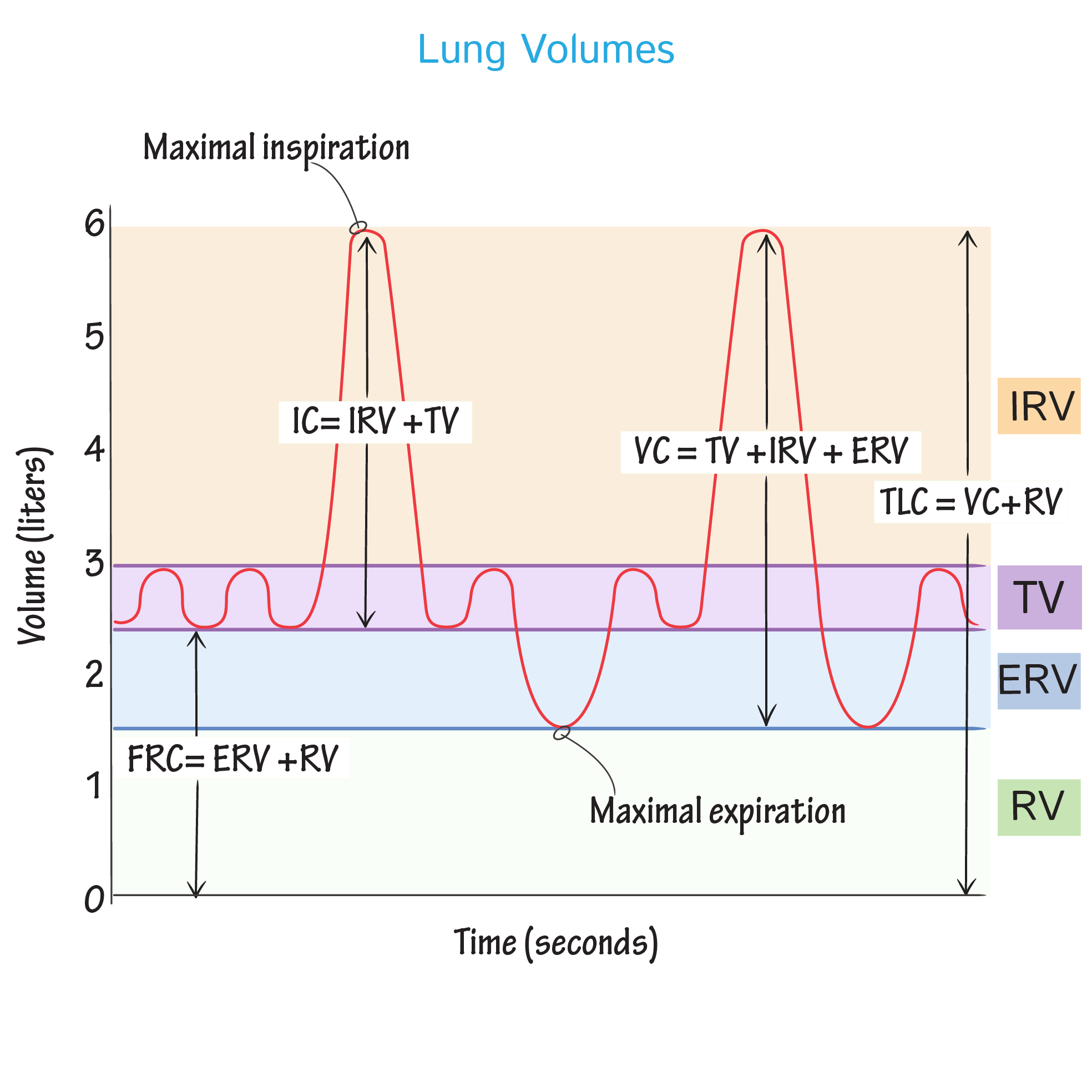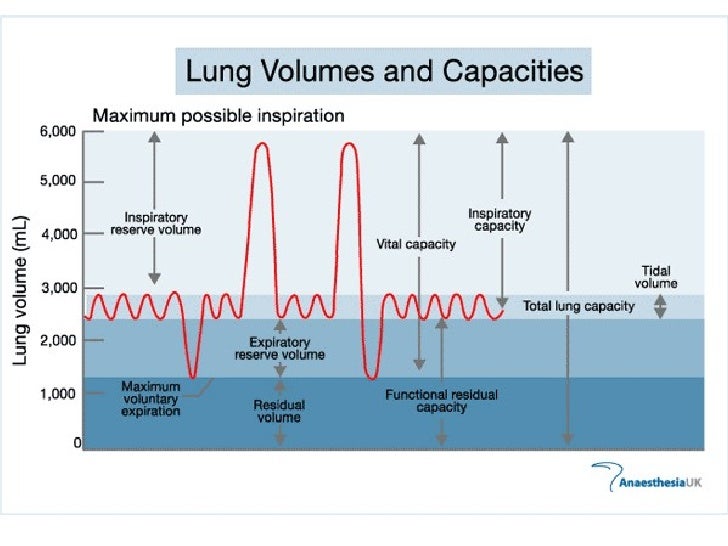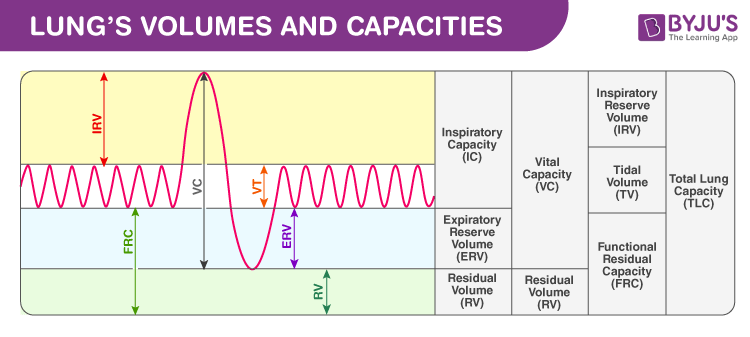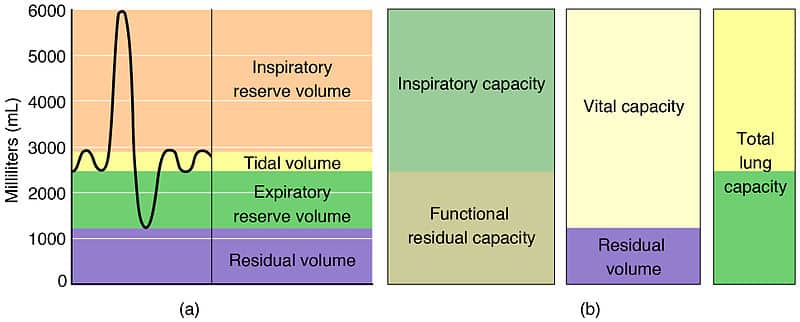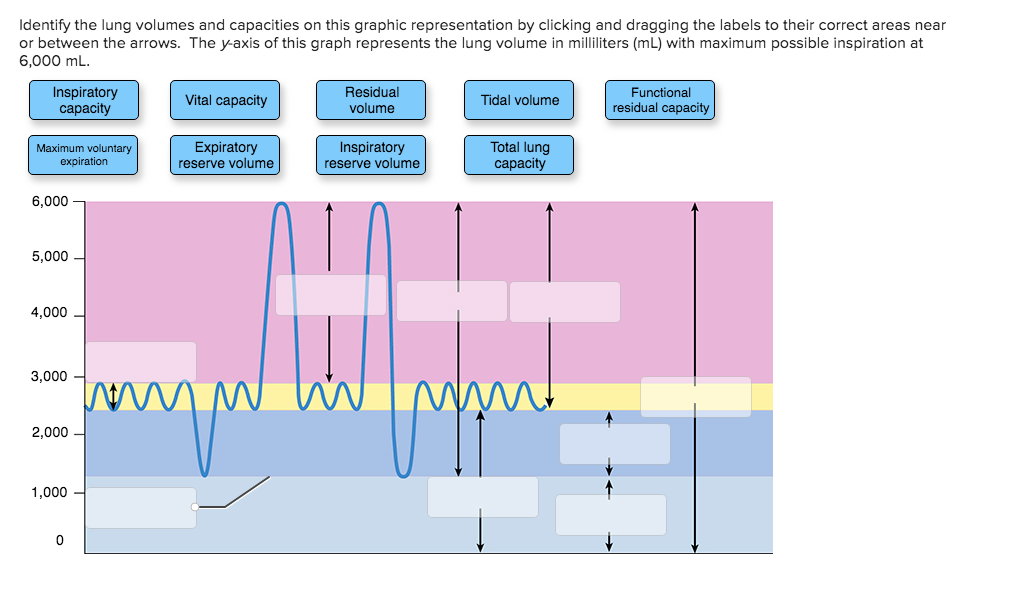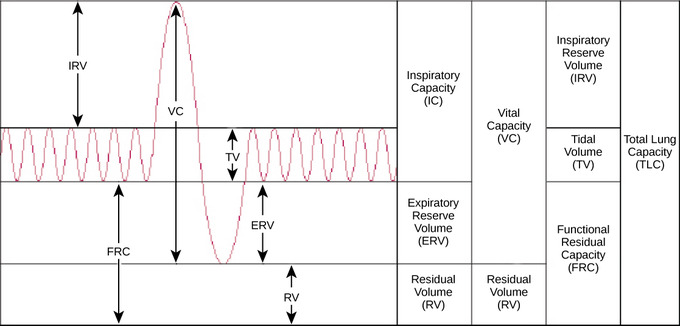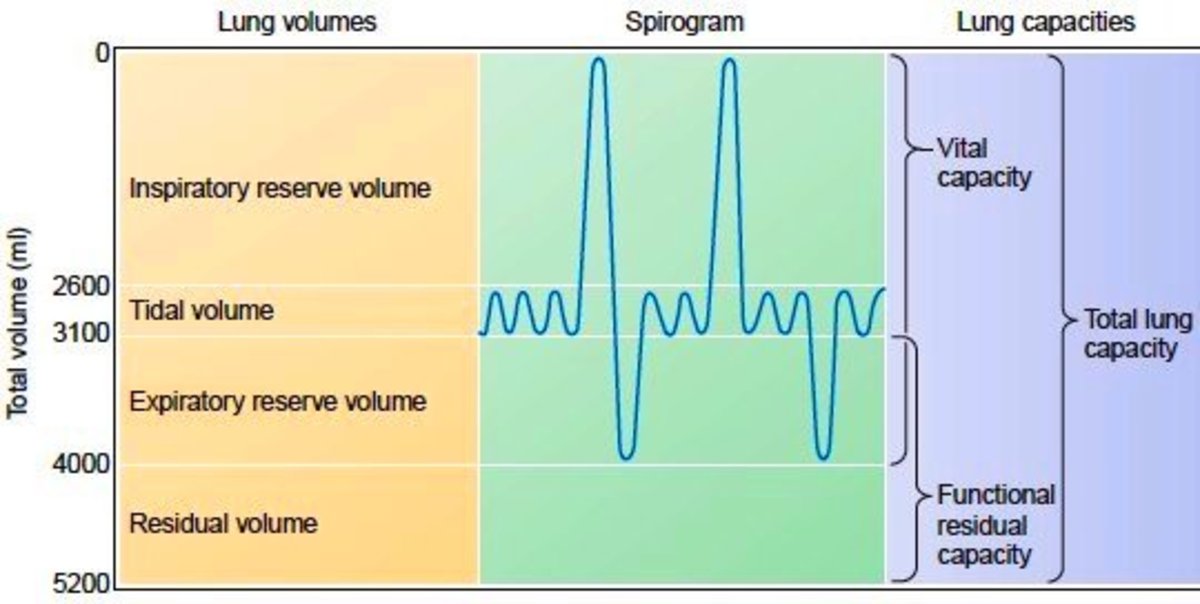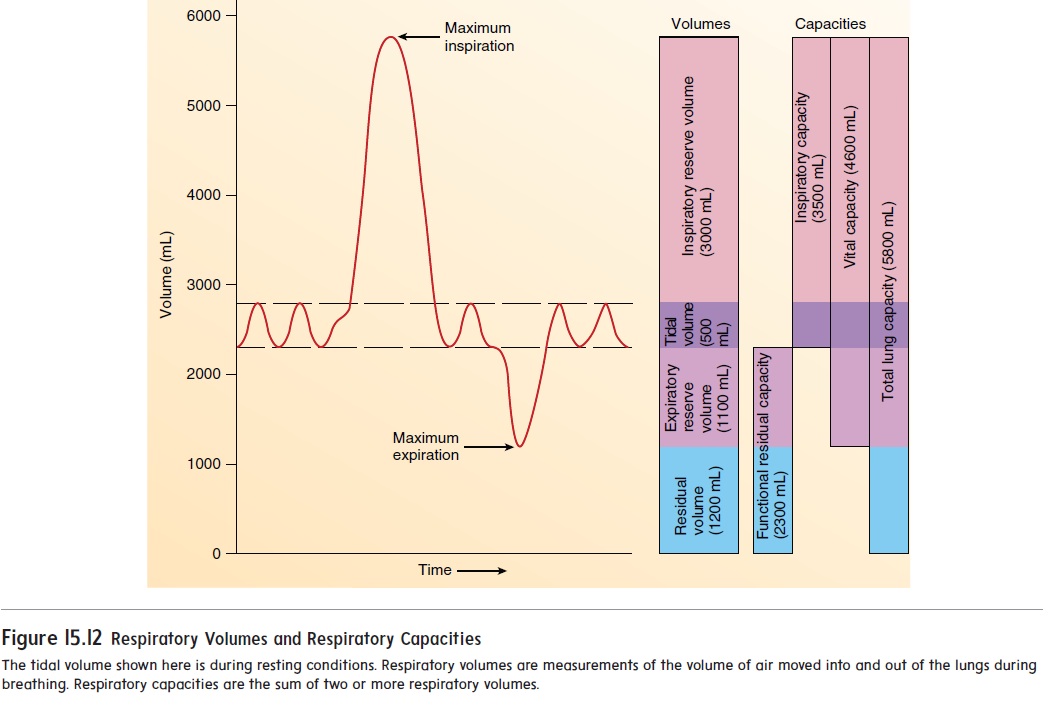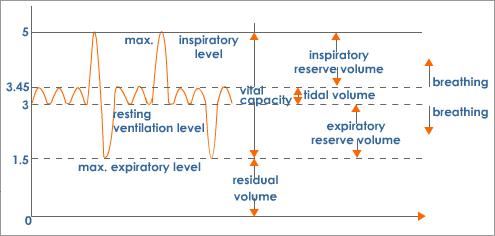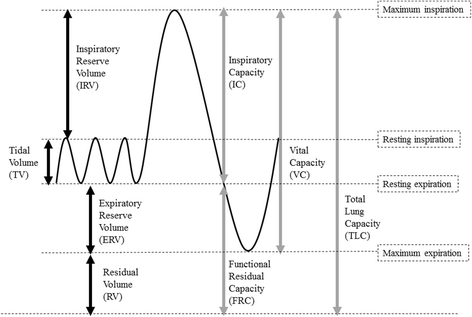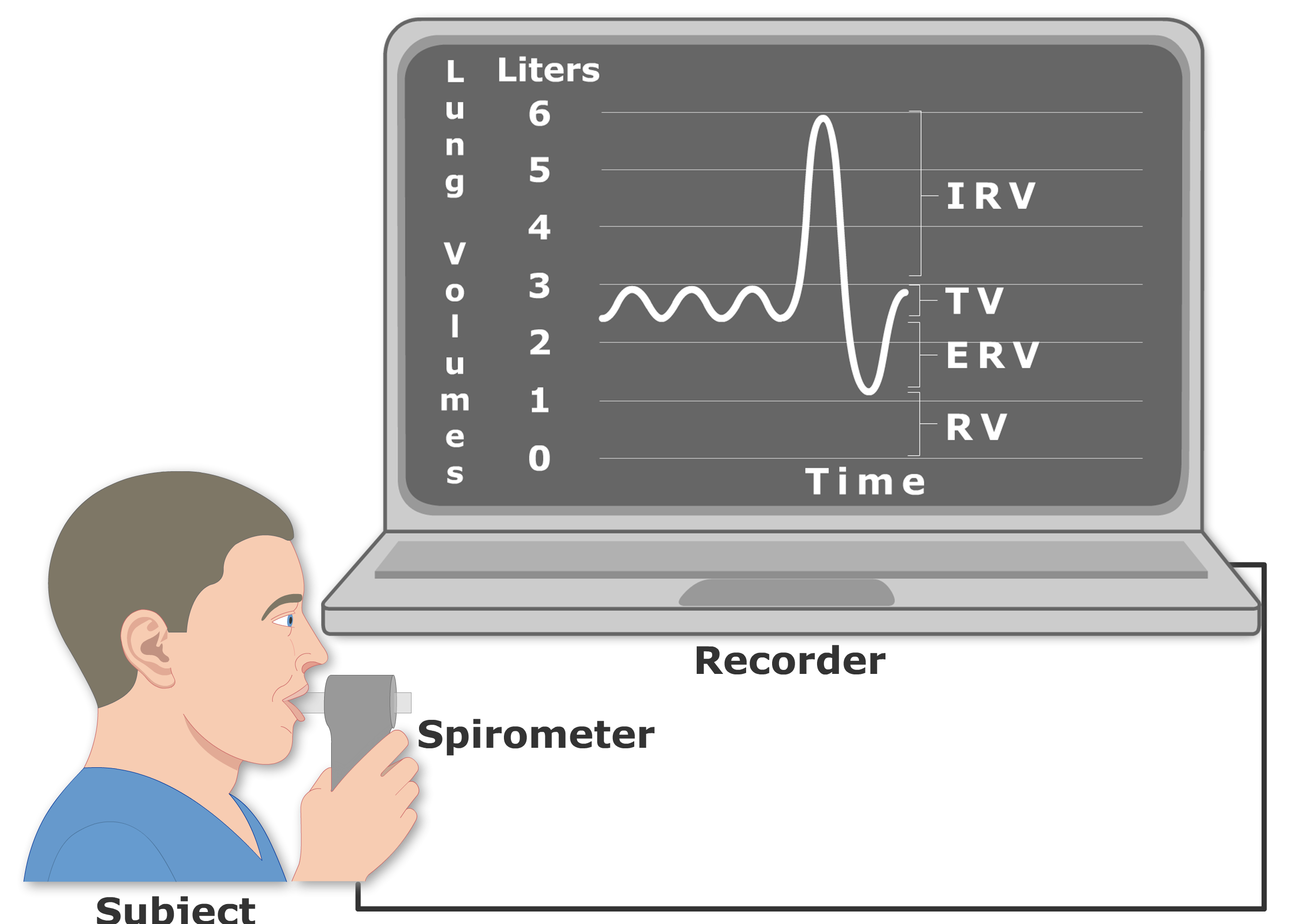Lung Volumes And Capacities Chart
Respiratory lung capacities two or more respiratory volumes added together1.
Lung volumes and capacities chart. Inspiratory capacity TV IRV2. Among healthy adults the average lung capacity is about 6 liters. There is a vast difference between.
Age gender body composition and ethnicity are factors affecting the different ranges of lung capacity among individuals. A lung capacity is the sum of two or more lung volumes. Volume remaining after quiet expiration.
The below Lung volumes and capacities chart provides the average and normal lung volumes and capacities for men and women. Expiratory capacity 1500 ml- 1600 ml. The average total lung capacity volume is about 5800 mL in males and 4300 mL in females.
I Inspiratory Capacity IC. Height has the greatest influence. Lung capacity or total lung capacity TLC is the volume of air in the lungs upon the maximum effort of inspiration.
Both lung volumes and capacities are important in the diagnosis of diseases. The total lung capacity applies to the total volume of air-filled in the lungs after a forced inspiration. We can express lung volumes and capacities normal values as under-Inspiratory capacity 3000 ml- 3500 ml.
Lung Volumes and Capacities. Volume of air in lungs after maximum inspiration. Total lung capacity 5800 ml.
The total volume of your lungs. Vital capacity 3500 ml- 4500 ml. Lung volume is a parameter of the lungs which can be directly measured by a spirometer.
Ii Functional Residual Capacity FRC. 9 rows Normal Reference Values for Lung Volumes and Capacities. The vital capacity VC about 4800 mL is the total amount of air that can be expired after fully inhaling VC TV IRV ERV approximately 80 percent TLC.
Note that residual volume cannot be measured with a spirometer because it is air that cannot be exhaled. Affected by height gender posture changes in lung compliance. Figure 1616 A spirogram showing lung volumes and capacities.
Summing specific lung volumes produces the following lung capacities. Absolute volume in mlkg. Your vital capacity plus the amount of air you cannot voluntarily exhale.
Expiratory reserve volume residual volume. The total lung capacity TLC about 6000 mL is the maximum amount of air that can fill the lungs TLC TV IRV ERV RV. Tidal volume inspiratory reserve volume.
Residual Volume RV see image below the amount of air remaining in the lungs after an ERV about 1200 ml in men women. The below Lung volumes and capacities chart provides the. The vital capacity for example is the sum of the tidal volume the inspiratory reserve volume and the expiratory reserve volume.
For example the structure of a dogs lungs is smaller than humans. Also the lungs of a sparrow are different as they can fly. Vital capacity see image below TV IRV ERV.
Functional residual capacity 2500 ml. Lung volumes and capacities are two significant terms in the respiratory system. The vital capacity is the total volume of air that can be expired after a maximum inhalation or maximum air that a person can breathe in after forced expiration.
Functional reserve capacity ERV RV. The lung capacity of a healthy man is estimated to be 6000 ml. However the structure and capacities are different amongst various species.
4 rows Lung Volumes And Capacities Chart. On the other hand lung capacity is a parameter calculated by combining two or three lung volumes. The difference between obstructive and restrictive.
5 rows Normal lung volumes and capacities chart. The lung volume is measured using tidal volume TV expiratory reserve volume ERV and inspiratory reserve volume IRV using a spirometer. Lung Volume vs Lung Capacity.
Lung Volumes and Capacities Values. The main difference between lung volume and lung capacity is the values and the. Maximum volume of air that can be inspired from the end-expiratory position ie TV IRV about 35 litres.
The determination of static lung volumes is essential for the diagnosis of restrictive or mixed ventilatory defects In obstructive defects it may also help to disclose underlying diseases to evaluate their functional consequences and to assess their severity 13Although the proportion of individuals older than 65 years of age is increasing many of the reference equations. Lung is the primary respiratory organ of animals.
